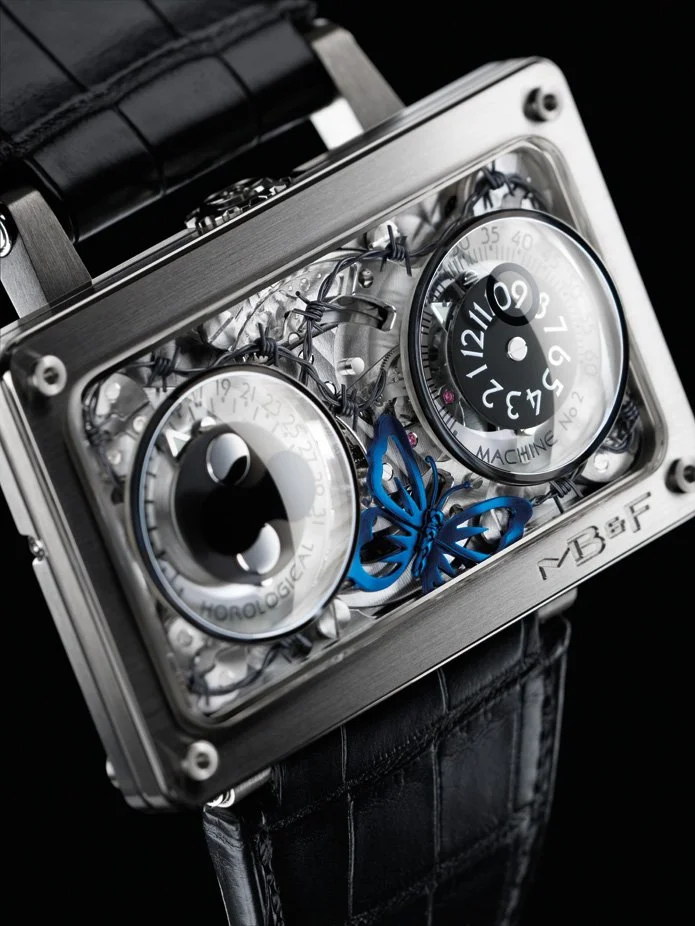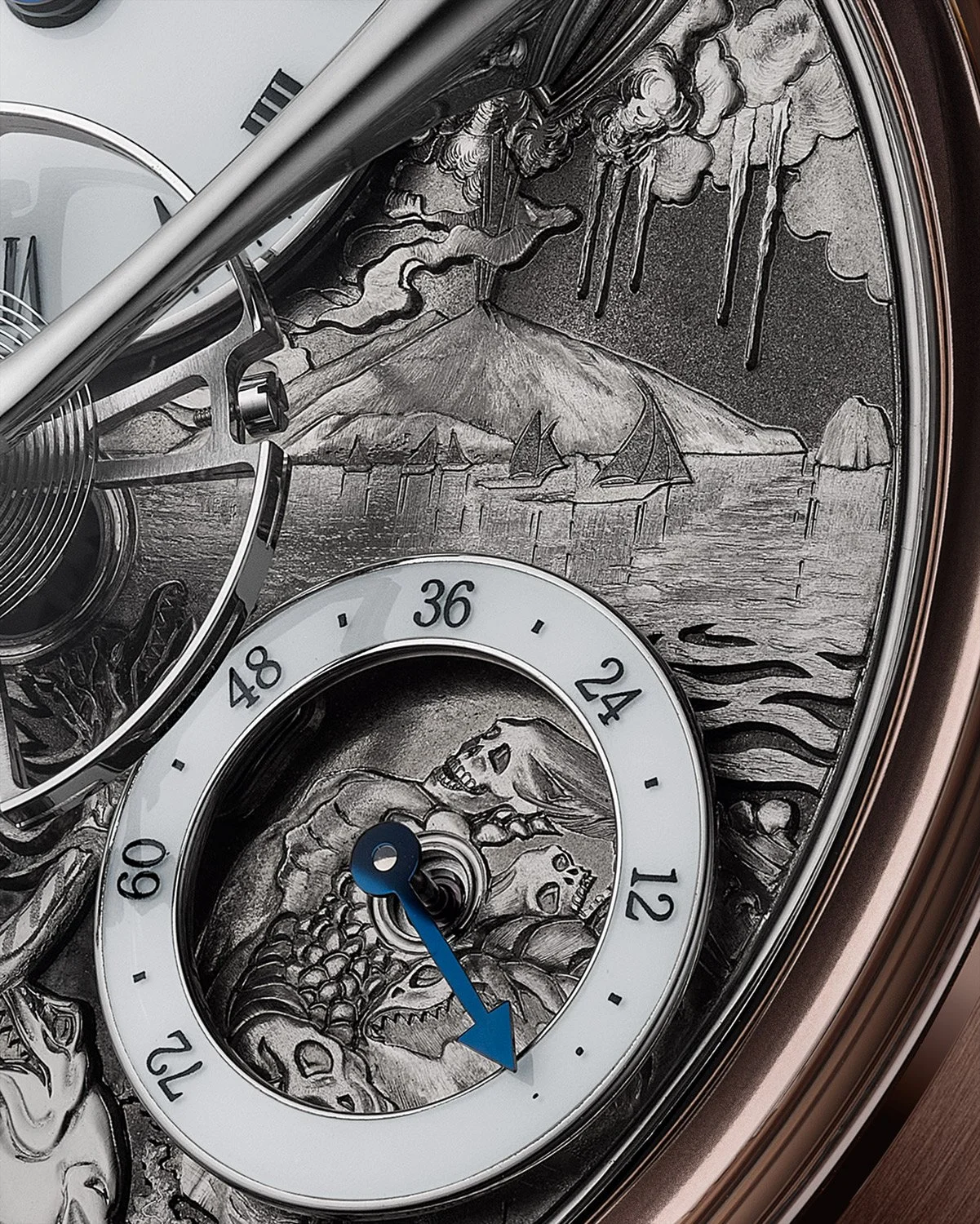Working with artists outside of watchmaking – a chat with Max Büsser
There’s arguably no one in independent watchmaking with more experience working in a collaborative way than Max Büsser. From his earlier days at Harry Winston, leading the Opus projects, to the very DNA of his own brand at MB&F, Max knows a thing or two about working with others to create excellent, avant-garde timepieces.
While collaborating with others inside watchmaking is quite common and carries a long history with the Swiss “cottage industry,” it’s quite rare to collaborate with those outside of watchmaking. Especially in independent watchmaking, “outsider artists” – painters, sculptures, and those in multimedia – don’t often enter the domain to put their fingerprints on a new watch.
MB&F is one of the brands that came to mind when thinking about exploring how indies work with non-watchmaking artists. With a dedicated category of their catalog, “Performance Art,” the brand develops these timepieces in limited quantities alongside admired artists. This includes everything from work with Sage Vaughn for the HM2 Only Watch in 2009 to Xia Hang’s Legacy Machine 1 timepieces to Eddy Jaquet’s hand-engraving on the LM Split Escapement to the most recent M.A.D.1 “Time to Love” release with Jean-Charles de Castelbajac (JCDC).
We were fortunate to speak with Max to dig into the question – “what makes for a good collaboration with an artist outside of watchmaking?”
The spark that lights new collabs
One of the first thoughts that come to mind when looking at all the artists that have entered the world of MB&F – how does Max choose who to collaborate with in non-watchmaking domains? All of the artists mentioned above are so different, and not all fit seamlessly into the avant-garde aesthetic of Horological and Legacy Machines. For Max, the answer was simple: “these are all artists that I already knew before MB&F, or artists that I met along the way.”
In collaboration with Sage Vaughn, the HM2 for Only Watch 2009
In the case of Sage Vaughn, Max was introduced to Vaughn’s work through a gallery showing in Geneva. Drawn to the artist’s pursuit of representing the complex co-existence of nature and technology, Max purchased one of the artist’s pieces before ever thinking about a possible collaboration with MB&F. Years later, there was a creative spark that aligned Vaughn’s art and the work of Only Watch with its charity dedicated to researching cures for Duchenne Muscular Dystrophy. As we can see with the HM2 for Only Watch 2009, there’s a clear vision to bring the tension of nature and technology, health and illness, to the forefront of a timepiece – butterflies and barbed wire fill space in the openworked dial – to show that there’s hope in the most challenging situations. This is very early in MB&F’s history – only 4 years after its founding – and we already see creative energy coming from beyond watchmaking.
LM1 Xia Hang featuring the aluminum man as a power reserve indication
All of MB&F’s collaborations begin with a deeper understanding of the artist and their work – that’s true for Xia Hang, Edy Jacquet, and JCDC. All entered into the world of MB&F watchmaking through Max’s existing appreciation of their creations across sculpture, design, fashion, engraving, etc.
Different collabs for different types of artists
Before we dive into Max’s four keys to success in collaborating with outside artists, there’s one important thing that Max mentioned when thinking through how collaborations work. There’s a difference between an artist and a designer. Though both share a lot of similar qualities – both are fundamentally creative – designers tend to have a broad sense of how everything comes together across different teams to create an end product. What’s interesting about this difference though, it allows for different degrees of freedom in the collaborative process.
JCDC with the M.A.D.1 “Time to Love”
Specifically in MB&F’s most recent collaboration on the M.A.D.1 “Time to Love,” JCDC was given a lot of room to explore how he wanted to put his fingerprints on an MB&F timepiece. With his extensive background in fashion, furniture, and even watchmaking with a previous collab with Swatch, JCDC didn’t required as much guidance through the process. “We let him choose the watch, basically gave him a list of things that could not be changed for pure watchmaking reasons, and then gave (JCDC) control over everything else.”
With the M.A.D.1 “Time to Love,” we see a timepiece that is both supremely “JCDC” with its vibrant colors, the artist’s hand-written numerals, and inscription beneath the rotor that communicates his pursuit of love and peace. This is the perfect example of how two design languages – JCDC’s and MB&F’s – merge to create something that is distinctly both at the same time.
The keys to success in collaboration
Bring to the project an existing appreciation of each artist’s intention and work. Work with artists on the level of their capabilities. This is the foundation on which Max laid out his four keys to successful collaborations with outside artists. For Max, every successful collab includes:
(1) An artist with unique identity
Every collaborator with MB&F has to bring their own well-developed identity to the table. “When an artist has a very discernible style, and most importantly, a different character than MB&F, then things can be interesting,” mentioned Max. “It has to be this way because MB&F design language is so strong, that it’s very easy to completely eat any collaborator’s addition to the creative process.” The M.A.D.1 “Time to Love” with JCDC is the most recent example of an artist with a strong identity, blending with the strong design language of MB&F.
(2) A fixation on product excellence
“There’s only one goal when collaborating – make a great product. Everything else is secondary.” For Max and his experience working with all types of artists (as well as many others in watchmaking), the only thing that matters is the excellence of the product. A first principle, everything flows from creating a high-quality timepiece.
(3) A set of shared values
Shared values keep every project going. It’s accountability, transparent communication, the pursuit of excellence, and respect for fellow collaborators – this is the baseline to establish a culture throughout the project with a non-watchmaking artist. “Shared values keep everyone aligned throughout a project.”
(4) A healthy dose of selflessness
“Everyone has an ego – that’s normal. But collaborating has less to do with being right, and more about what’s right for the project.” For Max, a healthy dose of selflessness is required in every collaboration. This ties back to his second key to success – focus on product. It’s simply improbable that a collaboration leads to a high-quality creation while there's an internal grappling match between teammates.
Close-up of Eddy Jaquet’s engravings from Jules Verne novels on the LM1
In all of this, there’s an even bigger, more overarching question to be had. Why work with artists outside of watchmaking at all? The reason we wanted to explore this topic is because it’s exciting. We believe every time an outside artist enters the realm of watchmaking, it opens new possibilities to think creatively about design, mechanics, and meaning. While not every collaboration is a guaranteed success, watchmaking benefits by stepping outside of the defined sandbox by working alongside “unusual” collaborators in other artistic disciplines. Max has been ahead of the curve in collaborating with artists (as well as supporting unusual artists with M.A.D. Galleries). We hope more indies, especially those from the next generation, find inspiration in contemporary artists and lean into more collaborations.





